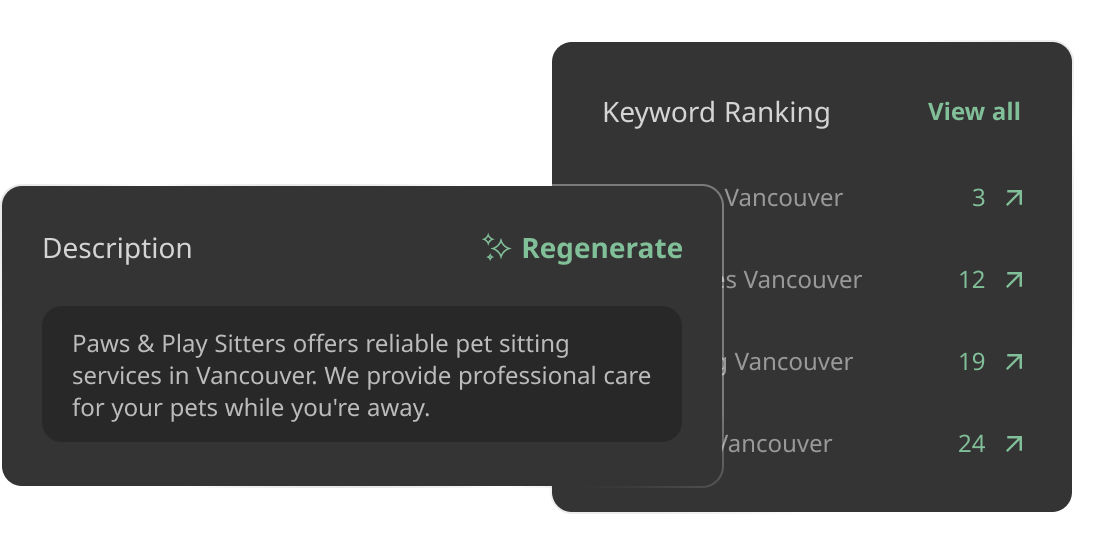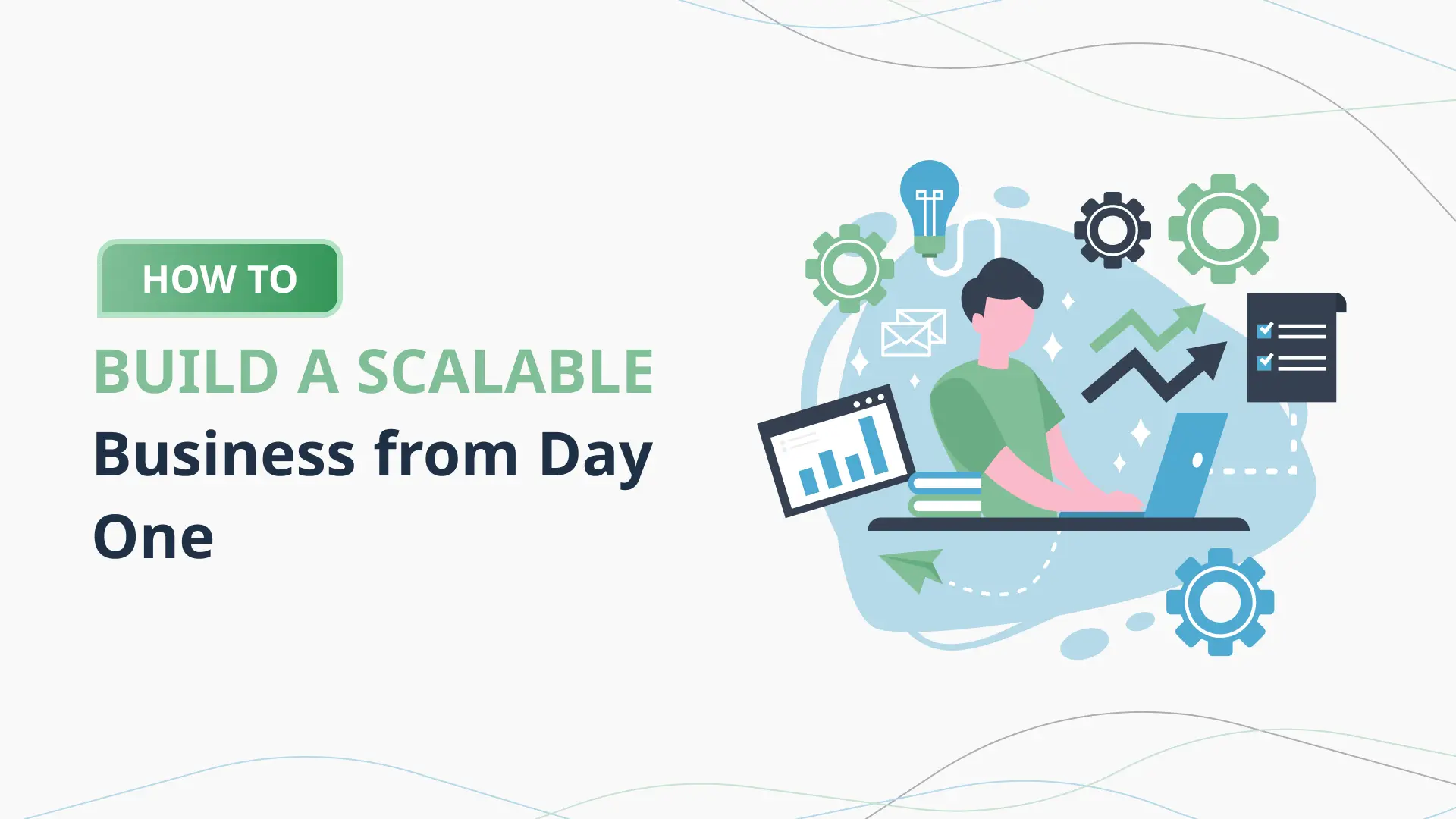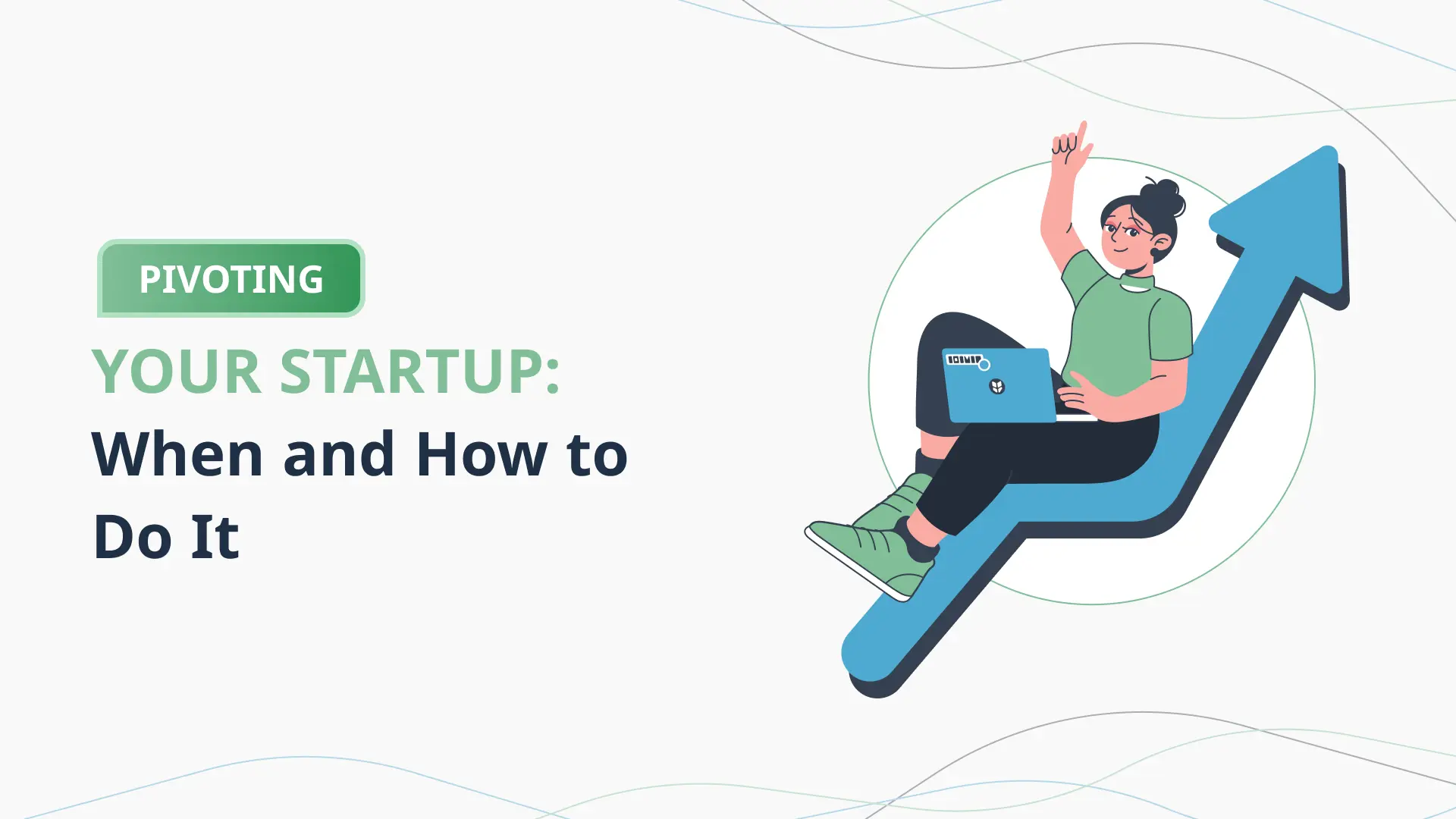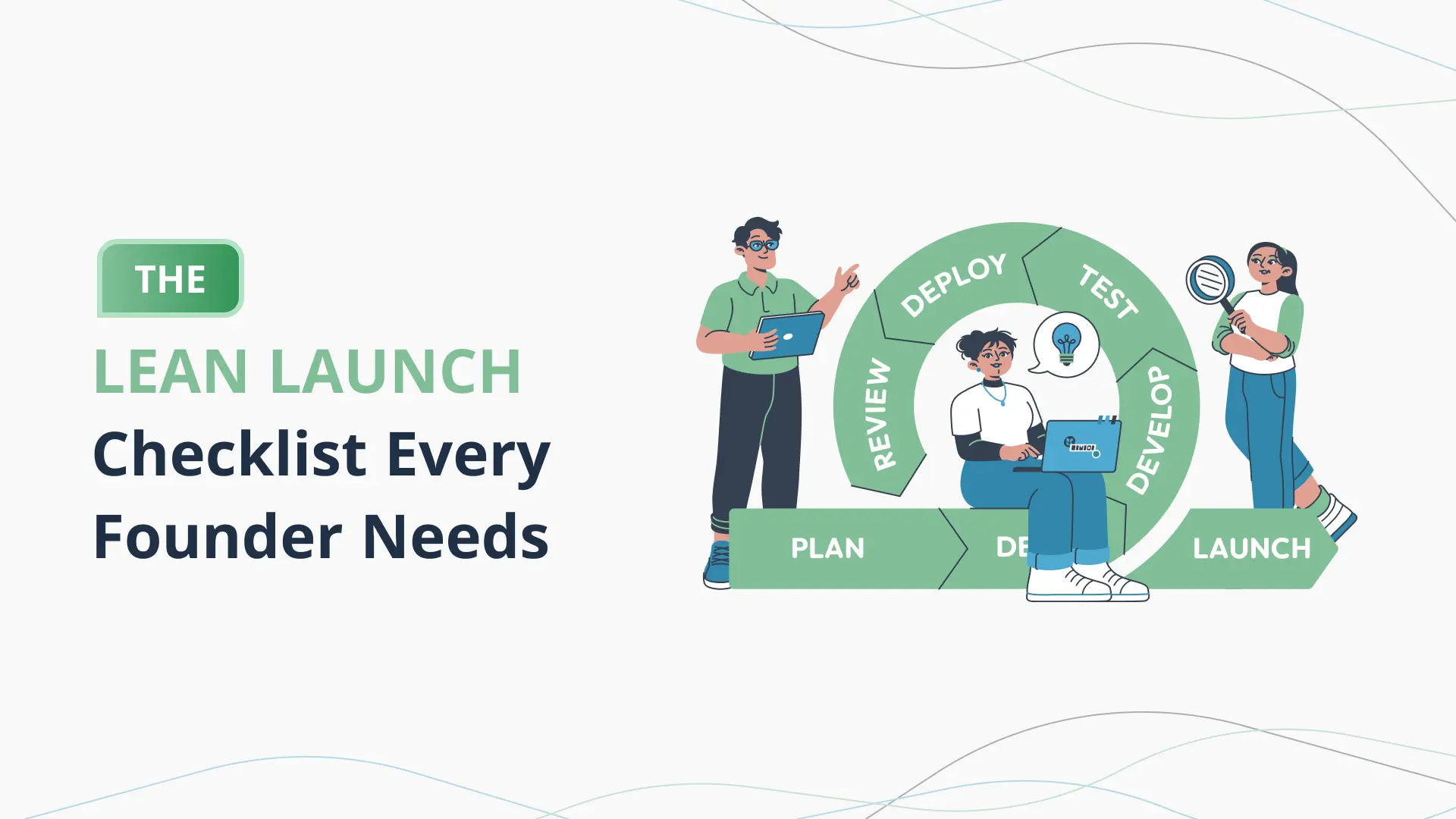Strategic Planning for First-Time Founders
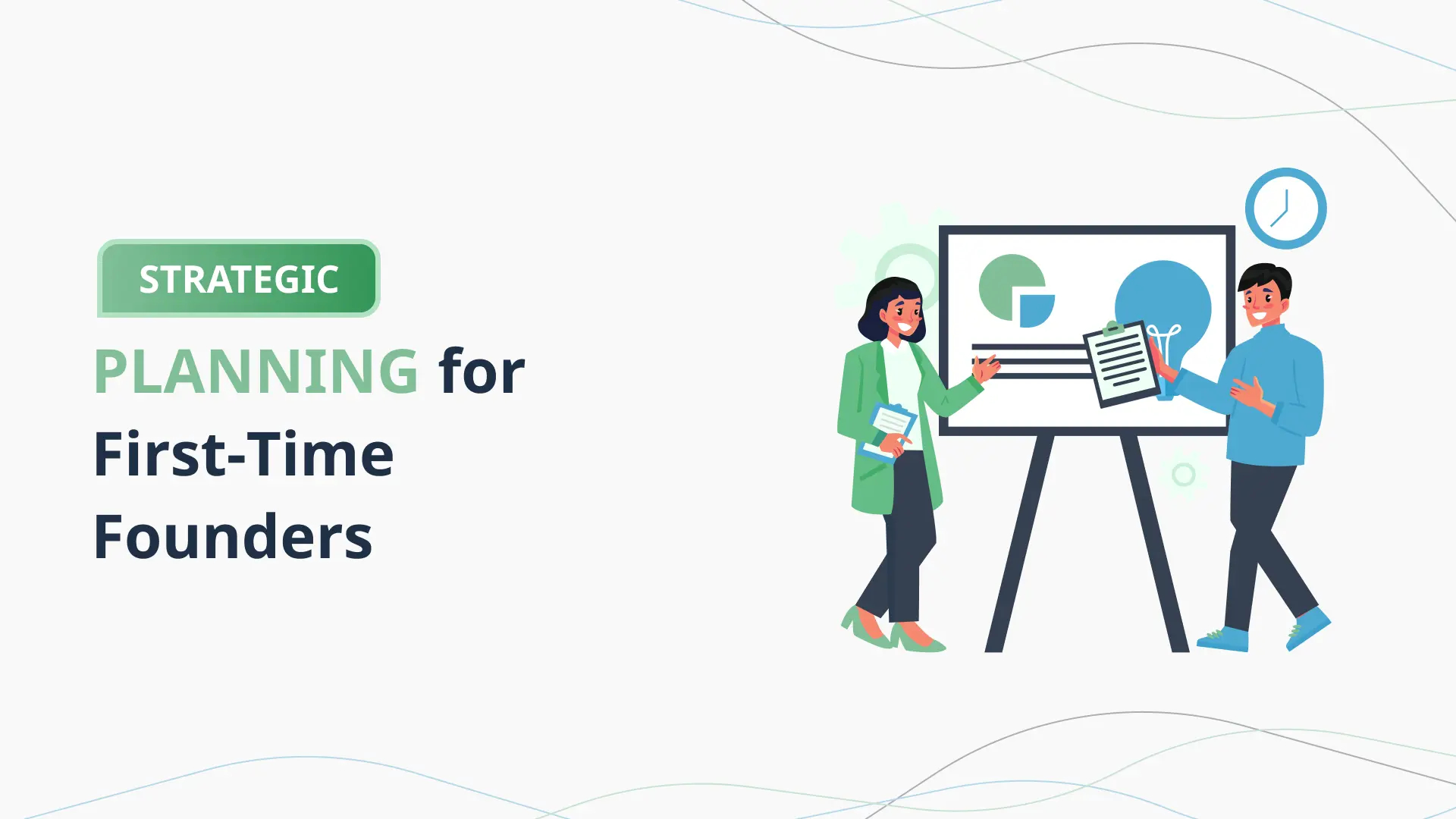
Introduction: Why Strategic Planning Is Non-Negotiable for First-Time Founders
If you’re a first-time founder, you’ve probably already noticed how fast things move—and how overwhelming it feels to juggle product, fundraising, hiring, and customer conversations all at once.
And let’s be honest: most first-time founders aren’t thinking about strategic planning.
They’re thinking about:
- Getting the MVP out the door
- Landing their first users
- Pitching investors before the runway dries up
But here’s the hard truth: ignoring strategic planning is exactly why many first-time founders fail early.
Because when you’re in the thick of startup chaos, without a clear plan, you fall into reactive mode:
- Chasing shiny objects instead of focusing on traction
- Building features based on assumptions, not customer data
- Wasting precious time and cash on channels that don’t convert
- Losing investor trust because your story feels scattered
Strategic planning isn’t about writing a 30-page document that collects dust.
It’s about creating a clear, flexible roadmap that helps you make better decisions, move faster, and adjust without chaos.
In fact, founders who carve out time for strategic planning—even just a few focused hours per month—outperform those who don’t:
- They close more deals, faster
- They align their teams around clear priorities
- They build stronger investor relationships
- They avoid the most common traps that kill early-stage startups
In this post, you’ll learn:
- What strategic planning really means for startups (and what it doesn’t)
- Why first-time founders skip it—and why that’s a mistake
- A simple, startup-friendly approach to strategic planning (without the corporate baggage)
- The classic mistakes first-time founders make when trying to plan
- A real-world example of a founder who used strategic planning to survive and scale
- How tools like PlanVista help you create—and stick to—a plan that evolves with your startup
If you’re tired of feeling reactive, scattered, or like your startup is running you instead of the other way around—this post is for you.
Because the truth is: the most successful startups aren’t the ones that hustle the hardest.
They’re the ones that plan smarter—and execute ruthlessly.
Let’s dig into how first-time founders can make strategic planning their unfair advantage.
What Is Strategic Planning for Startups (And Why Most Founders Get It Wrong)
When first-time founders hear the phrase “strategic planning,” many of them tune out.
Why?
Because it sounds like something suited for big corporations, MBA graduates, or boardrooms—not scrappy startups hustling to get their first customers.
But that’s exactly where most founders get it wrong.
Strategic Planning Is Not Corporate Fluff
At its core, strategic planning is simply about setting clear priorities, focusing on what matters most, and creating a roadmap to get from where you are now to where you want to be.
For startups, it’s not about predicting the next five years in perfect detail.
It’s about aligning your team (even if that’s just you and a co-founder) around:
- What you’re solving
- Who you’re solving it for
- How you’ll reach them
- What success looks like in the next 3, 6, or 12 months
- What could block you—and how you’ll navigate it
In startup terms, strategic planning is your founder’s compass.
It keeps you moving in the right direction when things get noisy, messy, and uncertain (which they will).
Why Most Founders Get It Wrong
Mistake 1: Assuming Planning Is a One-Time Task
Many first-time founders think they only need a plan to raise money or get into an accelerator.
They create a business plan once, pitch it, and then shelve it—never revisiting it as their startup evolves.
Reality:
Your plan should evolve with your startup.
Strategic planning is a living process—not a one-and-done exercise.
Mistake 2: Confusing Planning with Overthinking
Some founders avoid planning because they think it will slow them down.
They fear that spending time on strategy means less time building or selling.
Reality:
Good strategic planning accelerates decision-making.
It gives you clarity on what to say yes to—and what to ignore.
Mistake 3: Overcomplicating the Process
First-time founders often get stuck using bloated templates filled with jargon.
They overthink every section, creating documents no one reads or uses.
Reality:
Startup strategic planning should be lean, flexible, and built to change as you learn.
The Startup-Friendly Definition of Strategic Planning
For early-stage startups, strategic planning is about answering 5 key questions:
- What problem are we solving?
- Who is our customer?
- How will we reach them?
- How will we make money?
- What are our top priorities for the next 90 days?
If you can answer these five questions with clarity—and revisit them regularly—you’re already ahead of most first-time founders.
How First-Time Founders Should Approach Strategic Planning (Without Corporate Overkill)
Strategic planning doesn’t need to feel like a corporate retreat filled with buzzwords and vision statements.
In fact, the best startup strategic plans are short, sharp, and designed for speed.
Here’s how first-time founders should approach strategic planning—startup-style.
Step 1: Start with Brutal Clarity on the Problem and Customer
Everything begins here.
If you can’t clearly articulate:
- The exact problem you’re solving
- For a specific group of customers
You’re not ready to plan anything else.
Write it in plain English.
Example:
“We help busy restaurant owners automate inventory management to cut food waste and save hours of manual counting.”
This becomes your anchor for every decision.
Step 2: Define Your Core Assumptions
In the early stage, your entire business is a series of guesses.
Get them out of your head and onto paper:
- Who is the customer?
- How do they currently solve the problem?
- Why would they switch to your solution?
- What’s your pricing model?
- What channels will you use to acquire them?
Listing these openly makes it easier to spot holes—and test them fast.
Step 3: Set Clear, Short-Term Goals (Think 90 Days, Not 12 Months)
Forget long-term projections.
Focus on what you need to prove in the next 90 days:
- Launch MVP?
- Get first 20 paying customers?
- Validate willingness to pay?
Short-term goals keep you grounded in action—and help you avoid shiny object syndrome.
Step 4: Identify the Top 3 Priorities (And Ignore the Rest)
At any given time, your startup can only focus on a few critical priorities.
Force yourself to pick the top 3 that move the needle.
Example:
- Build MVP.
- Run 5 customer interviews per week.
- Launch pre-order campaign.
Everything else?
Either automate, delegate, or put in the parking lot.
Step 5: Build a Simple Execution Plan (No More Than One Page)
Your strategic plan should be visible, actionable, and lean.
Aim for a one-pager or a simple slide deck that your whole team can reference.
Include:
- Problem and customer
- Core assumptions
- 90-day goals
- Top 3 priorities
- Key metrics to track (like CAC, LTV, conversion rate)
Step 6: Review and Adjust Regularly (Monthly or Bi-Weekly)
Don’t let your plan gather dust.
Schedule a quick review every month or two:
- Are your assumptions still valid?
- What have you learned from customers?
- Do you need to pivot your goals?
Agile planning wins over rigid plans—every time.
Common Mistakes First-Time Founders Make in Strategic Planning (And How to Dodge Them)
Even when founders commit to strategic planning, many still fall into classic traps that can derail their startup’s focus, speed, and momentum.
Here are the most common mistakes first-time founders make—and how to avoid them.
Mistake 1: Treating the Plan Like a Static Document
Many founders create a strategic plan, feel good about it—and then never look at it again.
Weeks pass. Markets shift. Customers give feedback. But the plan stays stuck in the past.
How to dodge it:
Treat your plan as a living document.
Schedule a review every month (or every sprint if you’re running agile). Update your assumptions, revise your goals, and adjust your priorities based on real-world learning.
Mistake 2: Writing a Plan That’s Too Long or Complex
Some founders overcompensate and create massive documents filled with market research, competitor grids, financial models, and jargon.
It becomes overwhelming—and unusable.
How to dodge it:
Keep your plan lean.
Use one-pagers, slides, or simple visual canvases.
If it takes more than 5 minutes to explain your plan to a new team member or advisor, it’s too complicated.
Mistake 3: Planning in a Vacuum
First-time founders often write their plan alone, based on assumptions—not on customer conversations or data.
How to dodge it:
Build your plan in the field, not in your head.
Talk to customers. Validate assumptions with real conversations, surveys, or experiments. Let data—not guesses—shape your strategy.
Mistake 4: Ignoring Key Financial Drivers
Some founders get so focused on product and growth that they forget to model key financial basics, like:
- Burn rate
- CAC (Customer Acquisition Cost)
- LTV (Lifetime Value)
- Break-even point
They end up running out of runway—or pitching investors without understanding their own numbers.
How to dodge it:
Use simple financial models (tools like PlanVista make this easy) to forecast your cash flow, CAC, and runway.
You don’t need an MBA—just clarity.
Mistake 5: Failing to Share and Align the Team
Even if the founder has a great plan, they often keep it in their head or in a private doc.
The team, co-founders, and early hires are left guessing what the priorities are.
How to dodge it:
Share your plan early and often.
Use it in team meetings, investor updates, and retrospectives.
When the team is aligned around a clear, living plan, execution becomes faster and smoother.
Founder Story—How Strategic Planning Helped One First-Time Founder Survive and Scale
Meet Ravi, Founder of GreenGrain
Ravi was a first-time founder with a bold idea: create an online marketplace for local grain farmers to sell directly to small bakeries and restaurants.
He had industry contacts, a passion for sustainable agriculture, and a working prototype of his platform.
What he didn’t have?
A clear strategic plan.
The Chaos: Chasing Every Opportunity
In the early months, Ravi was stuck in startup chaos.
He was:
- Building features based on every piece of feedback he got.
- Pitching to investors, customers, and partners—without a clear story.
- Spending marketing dollars on ads, events, and influencer campaigns—all at once.
The result?
Burnout. Scattered progress. Confused investors.
The Turning Point: Strategic Planning Intervention
After a mentor gave him tough love—“You’re trying to do everything, which means you’re doing nothing well”—Ravi took a step back.
He booked a weekend, unplugged from day-to-day noise, and focused solely on lean strategic planning.
Using a simple one-page framework, he mapped out:
- The Problem: Small grain farmers struggle to find direct buyers; bakeries struggle to find affordable, traceable grain suppliers.
- The Customer: Small bakeries and restaurants within a 200-mile radius.
- Go-to-Market: Direct outreach to bakeries via local events, cold emails, and partnerships with chef associations.
- Key Metrics: Transactions per bakery, repeat orders, CAC.
- 90-Day Goal: Onboard 50 bakeries and 20 farmers.
He stripped away everything that didn’t serve these goals.
The Result: Focus, Momentum, Fundraising
With his lean strategic plan as his new compass:
- Ravi cut 60% of his product backlog—focusing only on features that helped transactions happen faster.
- He paused paid ads and focused solely on direct outreach to local bakeries.
- His pitch to investors became clearer, anchored in traction metrics and a defined plan—not just a big vision.
Within 3 months:
- GreenGrain hit 60 bakery signups (surpassing the 90-day goal).
- He secured a $250K angel round, using his lean plan to show disciplined execution and focus.
- He reduced CAC by 40%, thanks to focusing on high-touch, local channels.
The Lesson
Ravi didn’t avoid chaos by hustling harder.
He avoided it by stepping back, getting clear, and committing to a lean, flexible strategic plan that his whole team could rally behind.
And he kept that plan alive—reviewing it every month, adjusting based on customer data, and letting it guide his product, marketing, and fundraising decisions.
For first-time founders like Ravi, strategic planning wasn’t a “nice-to-have.”
It was the tool that helped him survive early chaos—and scale with focus.
How PlanVista Helps First-Time Founders Create—and Stick to—a Strategic Plan
For first-time founders, creating a strategic plan can feel like yet another overwhelming task on an already crowded plate.
But the right tools can make it not just easier—but faster, clearer, and more actionable.
That’s where PlanVista comes in.
PlanVista isn’t just a business planning tool—it’s designed to help startup founders create strategic plans that are:
- Lean
- Focused
- Built to evolve as your startup grows
Here’s how PlanVista helps first-time founders plan smarter from day one.
1. Guided Templates That Focus on What Matters
Forget corporate-style business plan templates.
PlanVista guides you to focus only on the core startup essentials:
- Problem and customer clarity
- Value proposition and solution
- Lean business model basics
- Go-to-market strategy
- Key metrics and financial drivers
- 30/60/90-day goals and milestones
No overcomplication.
No filler sections.
Just what you need to make better decisions and move fast.
2. Dynamic, Living Plans You Can Update Anytime
Your plan should evolve as you learn—not sit in a folder collecting dust.
PlanVista lets you:
- Quickly adjust your strategy as customer insights roll in
- Update goals, assumptions, and milestones as the market shifts
- Keep your team and investors aligned with the latest version of your plan
Because a plan that adapts in real-time is what keeps startups agile and focused.
3. Built-in Financial and Metric Tracking (Without Spreadsheets)
First-time founders often struggle with financials and metrics.
PlanVista makes it simple:
- Track your burn rate, CAC, LTV, and runway with guided tools
- Visualize your key numbers with charts investors and teams can actually understand
- Forecast basic revenue scenarios—without Excel headaches
You don’t need to be a CFO to stay on top of your startup’s critical financial levers.
4. One-Click Exports for Investors, Teams, and Partners
PlanVista turns your strategic plan into multiple formats:
- One-pagers for investor intros
- Lean pitch decks for demo days
- Strategy overviews for partner meetings
All with one click—keeping your messaging, numbers, and story consistent across every audience.
5. Keeps You Focused, Aligned, and Ready to Pivot
When you build your plan inside PlanVista, you create a founder-friendly decision engine:
- Use it in weekly standups to stay focused on key goals
- Reference it in investor calls to back your decisions with data
- Adjust it monthly to stay aligned with your evolving reality
It becomes the heartbeat of your startup—not just a side project.
Bonus Section: Pro-Level Habits to Make Strategic Planning Part of Your Startup DNA
The most disciplined founders don’t just create a plan and forget about it.
They embed strategic planning into their startup’s culture, making it a habit that drives better decisions, faster pivots, and stronger team alignment.
Here’s how you can do the same—without adding unnecessary process or overhead.
1. Run Monthly (or Bi-Weekly) Strategy Sprints
Just like product sprints, schedule short, focused strategic check-ins:
- Review your top 3 priorities.
- Check progress against your 90-day goals.
- Update assumptions based on new customer feedback or data.
- Decide what to stop, start, or double down on.
Keep these meetings short—no more than 60 minutes.
2. Make Your Plan Visual and Accessible
Your strategic plan shouldn’t live in a private Google Doc no one reads.
Use visual tools, one-pagers, or dashboards (PlanVista makes this easy) that your team can reference daily.
When your plan is visible, it stays top of mind—and drives daily decisions.
3. Use Your Plan to Say No (Ruthlessly)
Startups die by distraction.
Use your strategic plan as a filter to say no to anything that doesn’t align with your core goals, customer segments, or growth levers.
It becomes your weapon against shiny object syndrome.
4. Share It Beyond Your Team
Use your plan not just internally—but in investor updates, partner pitches, or even customer conversations.
When your stakeholders see you have a clear plan—and you’re executing against it—you build trust and credibility.
5. Celebrate Learning, Not Just Winning
Your strategic plan should evolve as you learn.
Create a culture where it’s okay to update the plan when data tells you to—not stick to outdated assumptions out of ego.
Make learning loops part of your planning rhythm.
Conclusion: Strategic Planning as a Founder Habit (Not a One-Time Event)
For first-time founders, the early months of a startup can feel like pure chaos.
Every day brings new fires to fight, new decisions to make, and new distractions to chase.
That’s exactly why strategic planning isn’t a luxury—it’s a survival tool.
But here’s the key mindset shift:
Strategic planning is not a one-time event.
It’s a habit.
It’s the practice of stepping back regularly, getting clear on your direction, and aligning your team (and yourself) on what matters most right now.
The most successful startups aren’t the ones with the thickest business plans.
They’re the ones who:
- Stay focused on the right problems
- Review and adjust their plans often
- Use their plan to drive action, not collect dust
- Make strategic planning part of their company’s rhythm, not an afterthought
Your Plan Should Serve You—Not the Other Way Around
A strategic plan isn’t meant to box you in.
It’s meant to give you clarity, focus, and speed.
When done right, it becomes:
- A tool to make faster decisions
- A compass to keep your team aligned
- A signal to investors that you’re serious, focused, and disciplined
- A safety net that helps you pivot quickly when the market shifts
Tools Like PlanVista Make It Easy to Plan Smarter
You don’t have to tackle strategic planning with blank docs, scattered spreadsheets, or outdated templates.
PlanVista gives you:
- A lean, startup-friendly framework
- Dynamic tools to update your plan as you learn
- One-click exports for investors, partners, or your own team
- Simple financial and metric tracking to keep your eyes on what counts
You can create, update, and share your plan in hours—not days or weeks.
Final Takeaway
If you’re a first-time founder and feeling stuck, reactive, or scattered—pause.
Step back.
Create (or revisit) your strategic plan.
Keep it simple. Keep it lean. Keep it alive.
Because startups don’t win by winging it.
They win by planning smarter—and executing ruthlessly.
Start building your founder-friendly strategic plan today with PlanVista.
Try it now—no credit card required.
FAQs
PlanVista is a business planning platform designed for startups to create lean, investor-ready plans, models, and projections.
Absolutely—PlanVista includes built-in financial forecasting and metric tracking for burn rate, CAC, LTV, and runway.
Yes—PlanVista lets you create dynamic plans, one-pagers, and decks that work for investors, partners, and internal teams.
Yes—PlanVista offers a free trial with no credit card required.
